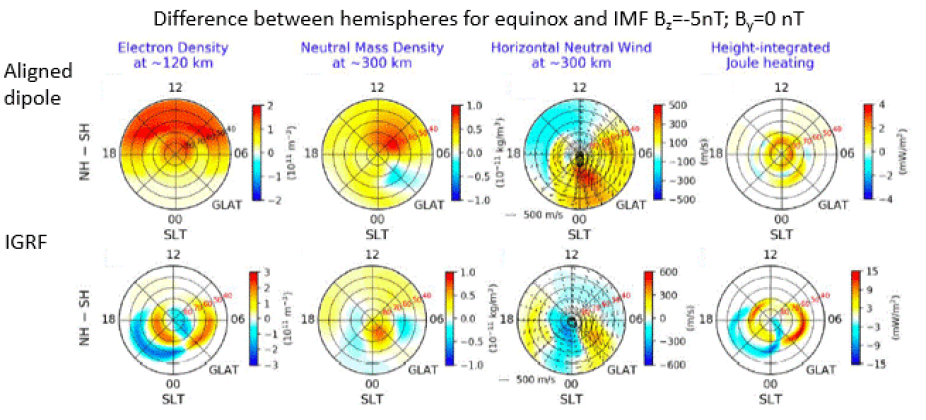Publication: Space Weather; Authors: Yu Hong, Yue Deng, Qingyu Zhu, Astrid Maute, Cheng Sheng, Daniel Welling, Ramon Lopez

Interhemispheric differences poleward of 40deg geog. latitude of E-region electron density (a), F-region neutral density (b) and neutral wind (c), and height integrated Joule heating (d) with symmetric magnetic field (aligned dipole- top) and realistic Earth's magnetic field (IGRF- bottom).
There are significant differences between the Earth’s two hemispheres such as the Earth's magnetic field and the intensity of solar radiation due to Earth's tilt of the rotation axis with respect to the Sun. Understanding the impact and therefore the importance of these asymmetries on the mid- and high-latitude upper atmosphere is a challenge in the geospace community. The main contributions to these asymmetries include among others: (1) the displacement between Earth’s magnetic poles and geographic poles, (2) the seasonal solar EUV irradiation, and (3) the magnetospheric forcing, including the electric field and the auroral particle precipitation. However, it is still unclear to what extent the ionosphere-thermosphere (I-T) quantities such as the electron density can be affected by these asymmetric causes. In this study, the asymmetric contributions of the above causes on I-T quantities have been estimated through comparisons of numerical experiments using the Global Ionosphere and Thermosphere Model (GITM). It is found that season plays a dominant role in causing hemispheric asymmetries in all the examined quantities; our results also suggest that the contributions of the asymmetric magnetospheric forcing could be even more important during intense storms than the other causes shown in this work.